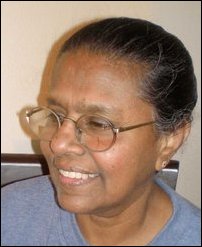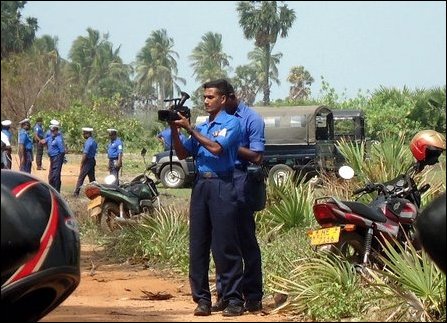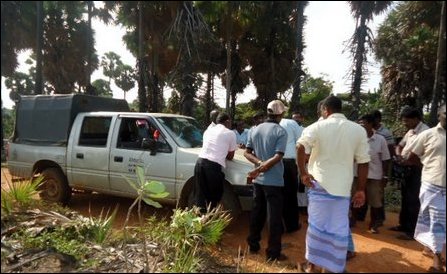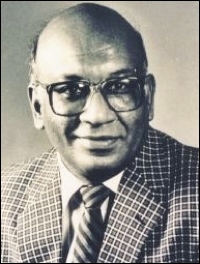PPT verdict and Eelam Tamils
[TamilNet, Friday, 31 January 2014, 13:18 GMT]
While the PPT hearings peeled away the layers of oppression the Eelam Tamils had faced due to the prolonged activities of the UK and USA, a “vortex model” that is now put in action with the allure of proximity to power, has created a new kind of thinking among many Eelam Tamils. These Eelam Tamils rationalise their pro-UK-USA position, thinking that Eelam Tamils will not gain justice without the support of these states and thus exposing their complicity will not work in our favour. Such a position is incompatible with the meaning of struggle. Eelam Tamils should develop a better strategy for their struggle than one that requires them to cover up the crimes of those states that were in complicity in the genocide. The PPT verdict should play a central role in that new strategy, writes N. Malathy.
Full text of the communication from Dr N. Malathy, a key member of NorthEast Secretariat on Human Rights (NESOHR) and the author of ‘A Fleeting Moment in my Country’, follows:
While the PPT hearings peeled away the layers of oppression the Eelam Tamils had faced due to the prolonged activities of the UK and USA, a “vortex model” that is now put in action with the allure of proximity to power, has created a new kind of thinking among many Eelam Tamils. These Eelam Tamils rationalise their pro-UK-USA position, thinking that Eelam Tamils will not gain justice without the support of these states and thus exposing their complicity will not work in our favour. Such a position is incompatible with the meaning of struggle. Eelam Tamils should develop a better strategy for their struggle than one that requires them to cover up the crimes of those states that were in complicity in the genocide. The PPT verdict should play a central role in that new strategy, writes N. Malathy.
Full text of the communication from Dr N. Malathy, a key member of NorthEast Secretariat on Human Rights (NESOHR) and the author of ‘A Fleeting Moment in my Country’, follows:
I was a witness at the PPT session
on Sri Lanka held in Germany in December 2013. I sat through most of the
public evidence that was presented.
The evidence given by Sinhala activists, Viraj Mendis and Bashana Abeywardane and also Phil Miller from London against the UK and the USA for their complicity in the genocide was liberating.
It generated a strong emotion in me. It felt like layers of oppression Eelam Tamils had faced for more than a century due to the activities of these two states were being peeled away. I cry as I write these sentences.
The PPT on Sri Lanka website says this evidence will be published on the website soon. I will urge all Eelam Tamils to read it.
* * *
This evidence gives broader context to the “vortex model” which was my earlier attempt to comprehend the post-2009 western campaign against Sri Lanka.
The vortex model places the institutions like: the governments of the UK and the USA; United Nations; INGOs like Amnesty International, Human Rights Watch and Channel-4; and individuals like Francis Harrison and Gordon Weiss in layers.
The entities in these layers have very little disagreement among them. All of them work for the same mandate but present different public faces confusing the Eelam Tamils.
During my stay in London I was appalled to observe the trust the Eelam Tamil activists are placing in the British Establishment. The “vortex” in action I thought.
* * *
The vortex model has another attribute - allure of proximity to power.
In relation to this, a comment made by someone from Colombo on the assassination of Neelan Thiruchelvam in July 1999, allegedly by a LTTE suicide bomber is of relevance.
The person was reflecting on whether Neelan Thiruchelvam despite his brilliant intellect and multiple skills had fallen prey to the allure of king making. Indeed Neelan Thiruchelvam too was a victim of the “vortex”.
* * *
The vortex has also created a new kind of thinking among many Eelam Tamils who are aware of the complicity of the UK and the USA.
These Eelam Tamils rationalise their pro-UK-USA position as follows: They think that Eelam Tamils will not gain justice without the support of these states and thus exposing their complicity will not work in our favour.
* * *
Such a position is incompatible with the meaning of struggle.
Eelam Tamils should develop a better strategy for their struggle than one that requires them to cover up the crimes of those states that were in complicity in the genocide.
The PPT verdict should play a central role in that new strategy.
Chronology:
The evidence given by Sinhala activists, Viraj Mendis and Bashana Abeywardane and also Phil Miller from London against the UK and the USA for their complicity in the genocide was liberating.
It generated a strong emotion in me. It felt like layers of oppression Eelam Tamils had faced for more than a century due to the activities of these two states were being peeled away. I cry as I write these sentences.
The PPT on Sri Lanka website says this evidence will be published on the website soon. I will urge all Eelam Tamils to read it.
* * *
This evidence gives broader context to the “vortex model” which was my earlier attempt to comprehend the post-2009 western campaign against Sri Lanka.
The vortex model places the institutions like: the governments of the UK and the USA; United Nations; INGOs like Amnesty International, Human Rights Watch and Channel-4; and individuals like Francis Harrison and Gordon Weiss in layers.
The entities in these layers have very little disagreement among them. All of them work for the same mandate but present different public faces confusing the Eelam Tamils.
During my stay in London I was appalled to observe the trust the Eelam Tamil activists are placing in the British Establishment. The “vortex” in action I thought.
* * *
The vortex model has another attribute - allure of proximity to power.
In relation to this, a comment made by someone from Colombo on the assassination of Neelan Thiruchelvam in July 1999, allegedly by a LTTE suicide bomber is of relevance.
The person was reflecting on whether Neelan Thiruchelvam despite his brilliant intellect and multiple skills had fallen prey to the allure of king making. Indeed Neelan Thiruchelvam too was a victim of the “vortex”.
* * *
The vortex has also created a new kind of thinking among many Eelam Tamils who are aware of the complicity of the UK and the USA.
These Eelam Tamils rationalise their pro-UK-USA position as follows: They think that Eelam Tamils will not gain justice without the support of these states and thus exposing their complicity will not work in our favour.
* * *
Such a position is incompatible with the meaning of struggle.
Eelam Tamils should develop a better strategy for their struggle than one that requires them to cover up the crimes of those states that were in complicity in the genocide.
The PPT verdict should play a central role in that new strategy.
Chronology:
31.01.14 PPT verdict and Eelam Tamils












